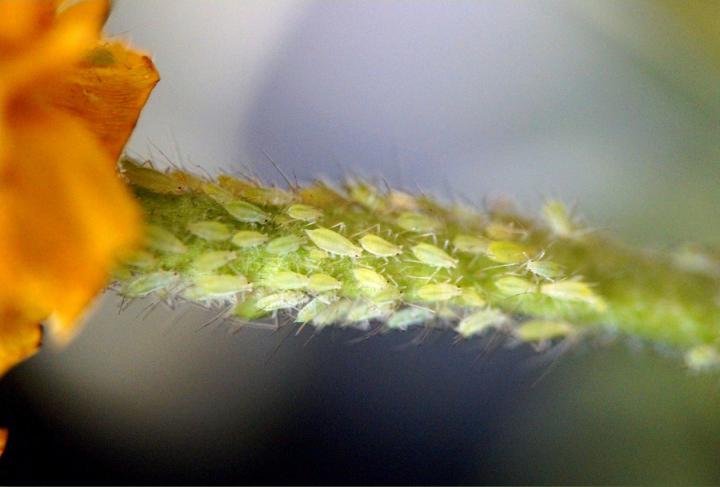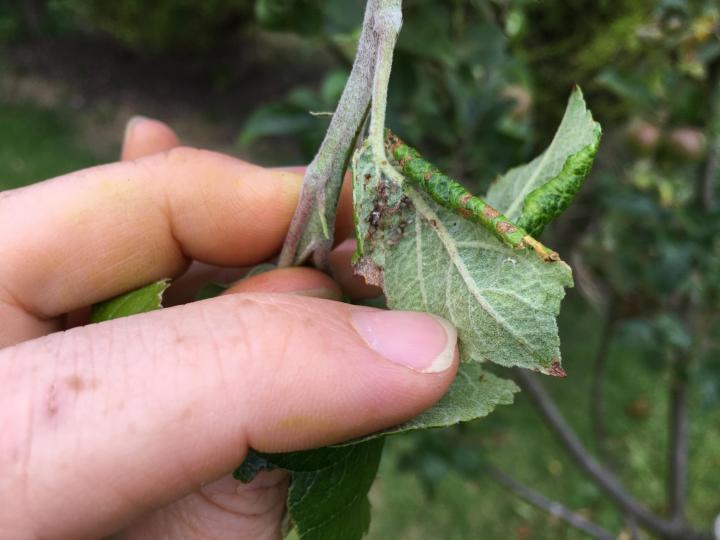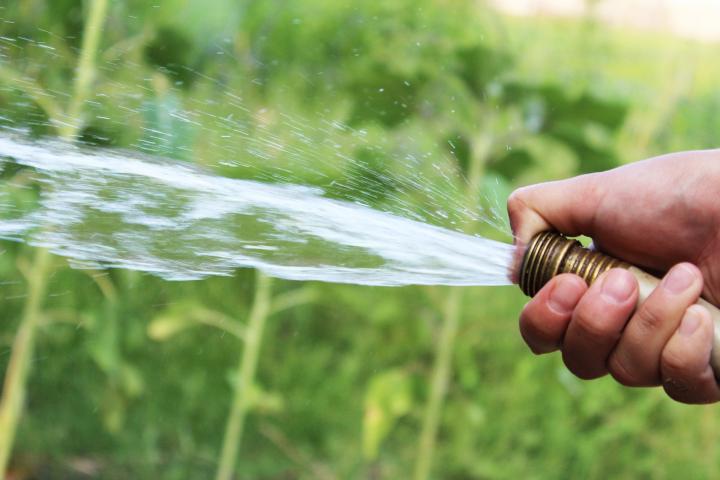






What are those white bugs on your plants? They're probably aphids! Here are our best tips on how to identify and control aphids in the garden.
Aphids seem to find their way into every garden. They are small, soft-bodied insects that can survive in almost any zone. Aphids multiply quickly, so try to control them before reproduction starts. Many generations can occur in one season. The good news is that they tend to move rather slowly and are relatively easy to control.
Aphids are tiny (about ⅓2” to ⅛”), and often invisible to the naked eye. Various species can appear white, black, brown, gray, yellow, light green, or even pink! Some may have a waxy or woolly coating. They have pear-shaped bodies with long antennae; the nymphs look similar to adults. Most species have two short tubes (called cornicles) projecting from their hind end.
Adults are usually wingless, but most species can develop a winged form when populations become crowded, so that when food quality suffers, the insects can travel to other plants, reproduce, and start a new colony. Aphids usually feed in large groups, although you might occasionally see them singly or in small numbers.
While aphids in general feed on a wide variety of plants, different species of aphids can be specific to certain plants. For example, some species include bean aphids, cabbage aphids, potato aphids, green peach aphids, melon aphids, and woolly apple aphids.

Photo credit: GrowVeg.com. Some aphids are darker colors like brown. The potato aphid is a common brown aphid.
Nymphs and adults feed on plant juices, attacking leaves, stems, buds, flowers, fruit, and/or roots, depending on species. Most especially like succulent or new growth. Some, such as the green peach aphid, feed on a variety of plants, while others, such as the rosy apple aphid, focus on one or just a few plant hosts.

Hosing down your plants is one way to control the aphid population in your garden.
Isopropanol (rubbing alcohol) works fine and is easy to find, but be sure it doesn’t have additives. Ethanol (grain alcohol) seems to work best. Alcohol usually comes in 70 percent strength in stores (or 95 percent strength purchased commercially). To make an insecticidal spray, mix equal parts 70 percent alcohol and water (or, if using 95 percent alcohol, mix 1 part alcohol to 1 ½ parts water).
You can also add alcohol to a soapy emulsion to make it more effective. For example, in a spray bottle combine 5 cups water, 2 cups alcohol, and 1 tablespoon liquid soap.
Caution: When applying an alcohol or soap spray, or a combination, always test a small area first, and apply in morning or evening, when the sun is not beating down. Watch the plant for a few days for any adverse reactions before applying more. Plants can be sensitive to alcohol and soap. Also, some soaps have additives that can damage plants—select the purest form.
Do you have more tips for controlling aphids? Let us know below!
How to Get Rid of Garden Inchworms
Anthracnose: How to Identify, Control, and Prevent Anthracnose
Cabbage Root Maggots: How to Identify and Get Rid of Garden Pests
Mexican Bean Beetles: How to Identify and Get Rid of Garden Pests
Squash Vine Borer: How to Identify and Get Rid of Garden Pests
Moles: How to Identify and Get Rid of Moles in the Garden or Yard
Squirrels: How to Identify, Control, and Get Rid of Squirrels in Your Garden
Copyright © www.100flowers.win Botanic Garden All Rights Reserved